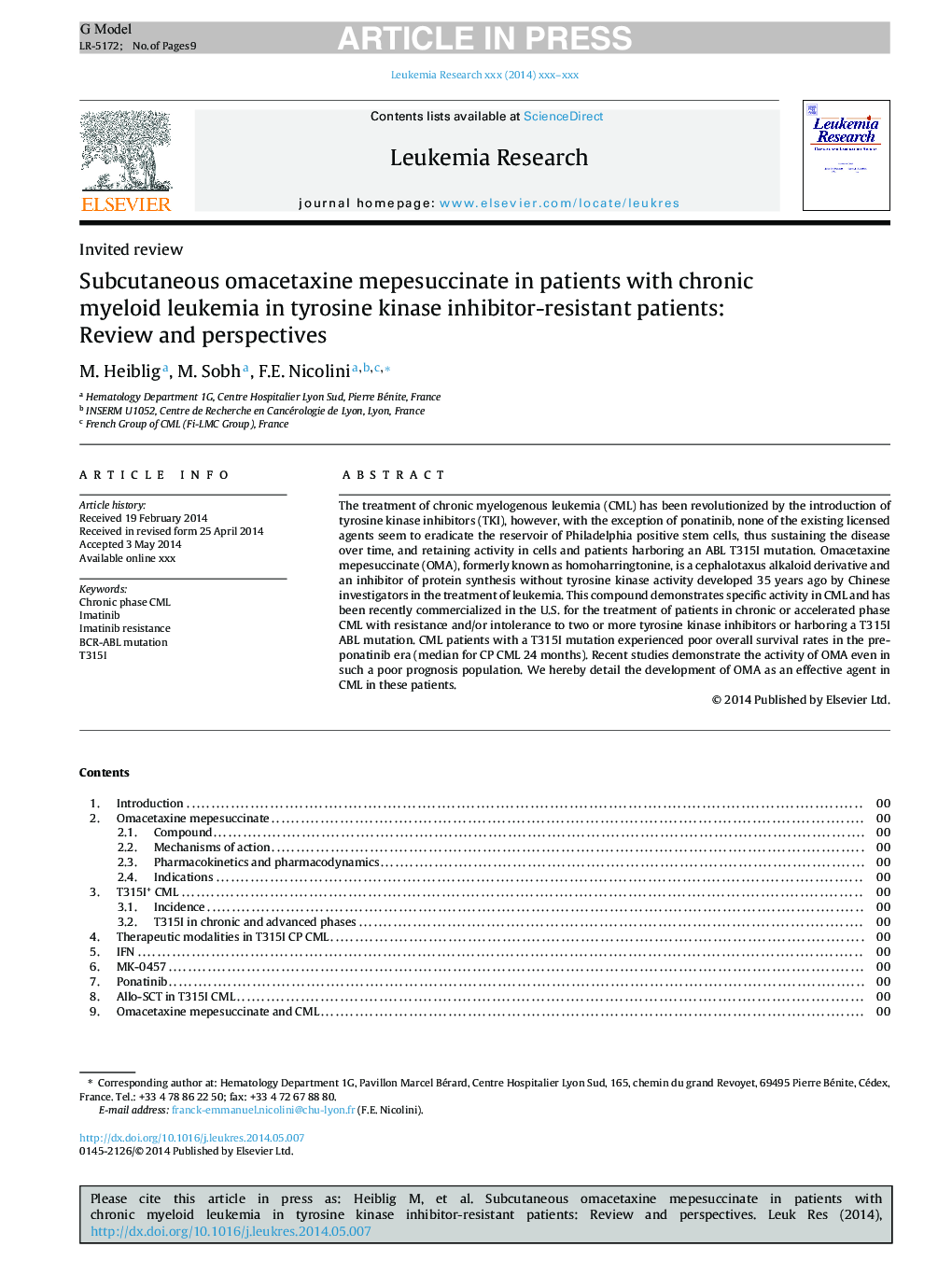| Article ID | Journal | Published Year | Pages | File Type |
|---|---|---|---|---|
| 10908685 | Leukemia Research | 2014 | 9 Pages |
Abstract
The treatment of chronic myelogenous leukemia (CML) has been revolutionized by the introduction of tyrosine kinase inhibitors (TKI), however, with the exception of ponatinib, none of the existing licensed agents seem to eradicate the reservoir of Philadelphia positive stem cells, thus sustaining the disease over time, and retaining activity in cells and patients harboring an ABL T315I mutation. Omacetaxine mepesuccinate (OMA), formerly known as homoharringtonine, is a cephalotaxus alkaloid derivative and an inhibitor of protein synthesis without tyrosine kinase activity developed 35 years ago by Chinese investigators in the treatment of leukemia. This compound demonstrates specific activity in CML and has been recently commercialized in the U.S. for the treatment of patients in chronic or accelerated phase CML with resistance and/or intolerance to two or more tyrosine kinase inhibitors or harboring a T315I ABL mutation. CML patients with a T315I mutation experienced poor overall survival rates in the pre-ponatinib era (median for CP CML 24 months). Recent studies demonstrate the activity of OMA even in such a poor prognosis population. We hereby detail the development of OMA as an effective agent in CML in these patients.
Keywords
Related Topics
Life Sciences
Biochemistry, Genetics and Molecular Biology
Cancer Research
Authors
M. Heiblig, M. Sobh, F.E. Nicolini,
